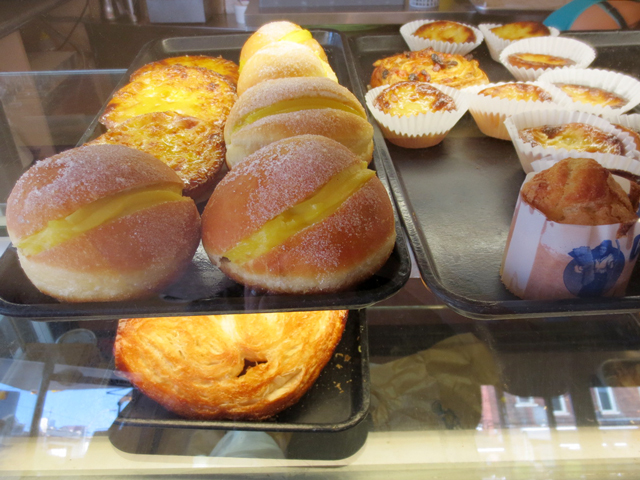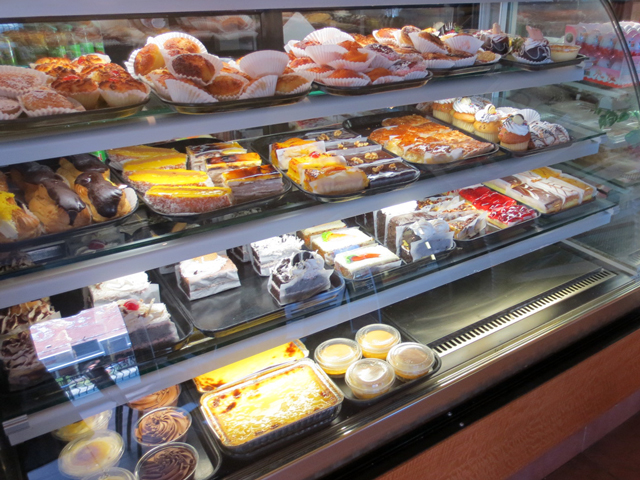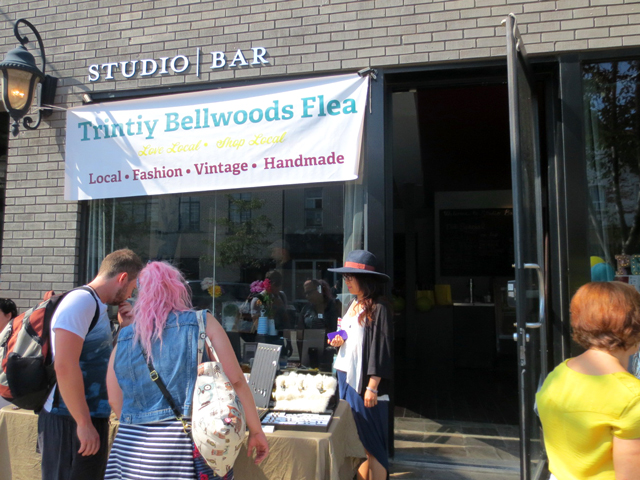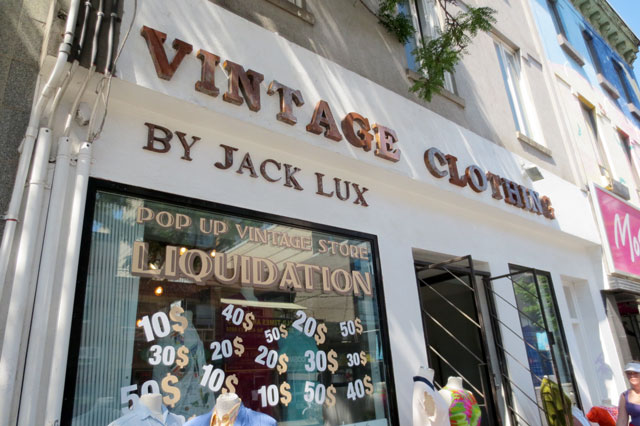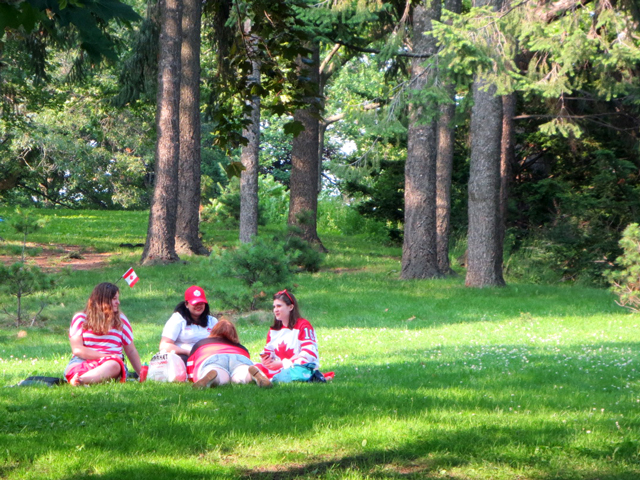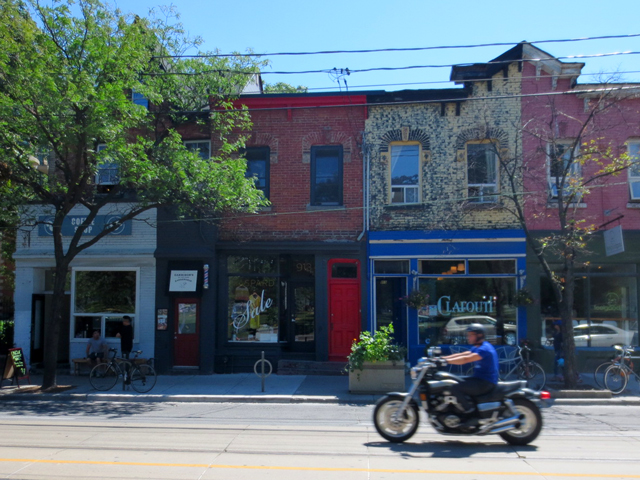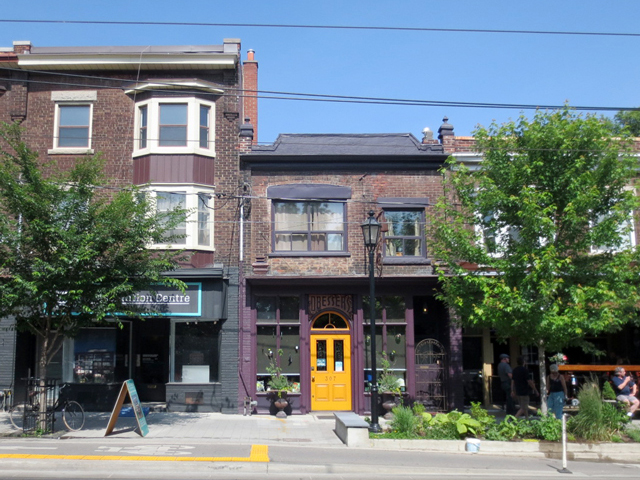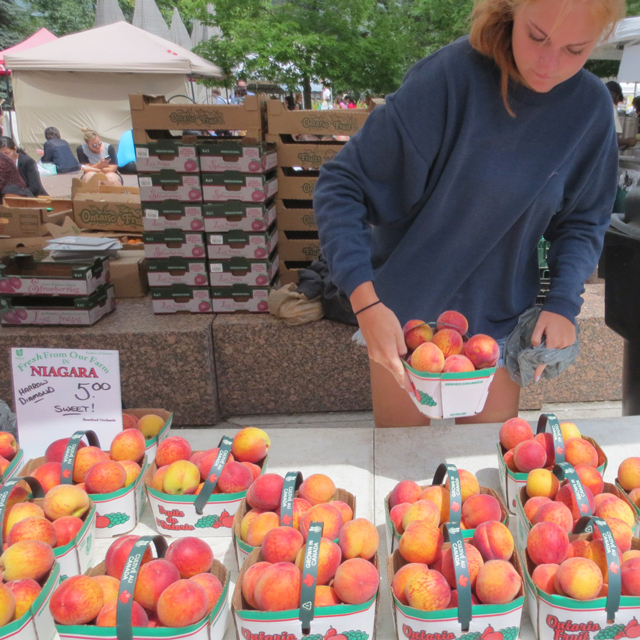Ha. I’ve just sat here at my computer, looking at a blank screen for the past 10 minutes, wondering what to write to go along with these pictures.
They were taken on a beautiful Saturday afternoon last weekend, when nothing much happened. We’d eaten lunch at home — cucumber, tomato and cheddar cheese sandwiches, with mayonnaise and shredded basil leaves, dill pickle on the side — so there were no restaurants to head over to. Nothing needed shopping for, nor were there major plans to prepare for. Basically, we were free to wander about without a goal or destination — free to stop and smell the flowers, as they say.
So that’s what we did.
This was the same walk I mentioned in my previous post, when we’d lucked into finding the Trinity Bellwoods Flea in process.
We stopped in at the Portuguese Bakery, Caldense, for six of their Pastal de Natas to take home. They are small custard tarts with a very flaky crust, and a huge tray of them was just being set out as we entered the shop.
Have you ever tried one? They’re delicious and come with an interesting back story :
“Pastéis de nata were created before the 18th century by Catholic monks at the Portuguese Jerónimos Monastery. At the time, convents and monasteries used large quantities of egg-whites for starching of clothes, such as nuns’ habits. It was quite common for monasteries and convents to use the leftover egg yolks to make cakes and pastries, resulting in the proliferation of sweet pastry recipes throughout the country.
Following the extinction of the religious orders and in the face of the impending closing of many of the convents and monasteries in the aftermath of the Liberal Revolution of 1820, the monks started selling pastéis de nata at a nearby sugar refinery to secure some revenue. In 1834 the monastery was closed and the recipe was sold to the sugar refinery, whose owners in 1837 opened the Fábrica de Pastéis de Belém. The descendents own the business to this day.
Since 1837, locals and visitors to Lisbon have visited the bakery to purchase fresh from the oven pastéis, sprinkled with cinnamon and powdered sugar. Their popularity normally results in long lines at the take-away counters, in addition to waiting lines for sit-down service.
Now, they can be purchased in many places all over the world, in bakeries, and sold in many hotels etc. : They’re custard tarts with a very flaky pastry, that were invented by Portuguese monks in the 18th century.” [Thank you Wikipedia – here]
↑ the Pastal de Natas are up-side-down on the bottom right ↑
↑ Old School — This is an all night diner, decorated in a mid-century style. We haven’t been yet but want to try it out. ↑
I wore the 1940s dress that I’d picked up at the pop-up store, Jack Lux, a great vintage shop in Montreal, that briefly filled a Queen Street West storefront last summer and that I’d written about here. (It was a bit big and too long, so I hemmed it and made a tie-belt to cinch the waist, with the part I cut off.)
The gardens left me envious …
Thank you for dropping by. I hope you had a great weekend.
xo loulou



